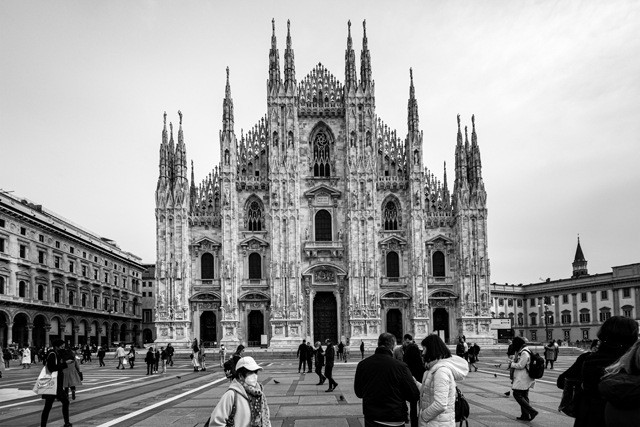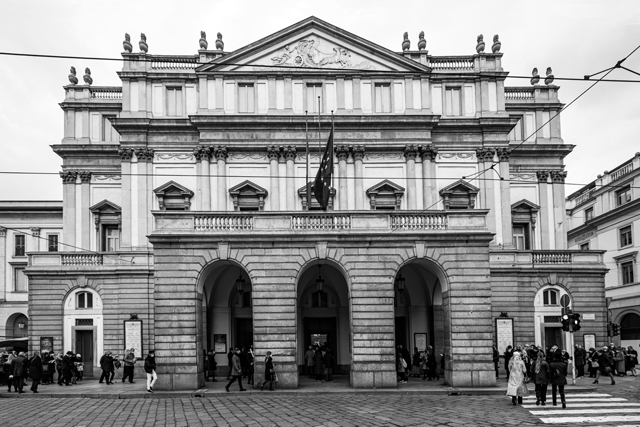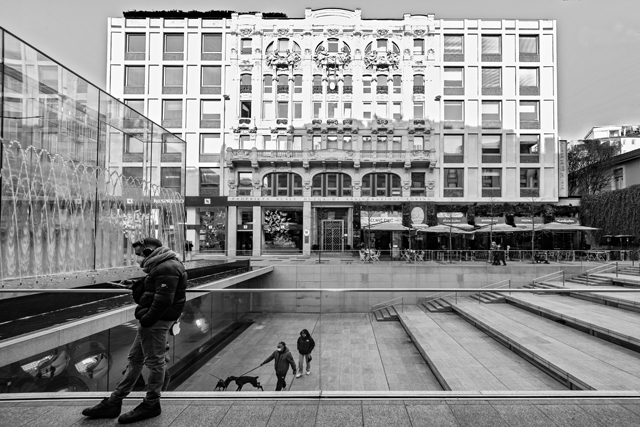Milano prima e dopo la pandemia
Le fotografie sono state scattate con le medesime modalità e utilizzando le stesse inquadrature a distanza di circa 7 anni le une dalle altre.
La prima serie di immagini è stata realizzata nell’agosto 2014 in una Milano deserta a seguito dell’assenza dei Milanesi che si erano recati in ferie come accadeva in quei tempi tutti gli anni.
La seconda serie di immagini è stata invece realizzata nel novembre 2021 e presenta una Milano apparentemente “normale”. Tuttavia, ad una più attenta osservazione, la presenza in alcuni casi di mascherine ci racconta che qualcosa nel frattempo è successo. L’affollamento, che nel 2014 avrebbe disturbato la visione delle strutture architettoniche, appare ora come una “liberazione annunciata” dalla pandemia ed esprime quindi anche in questo caso un messaggio di positività, ma di natura ben diversa: la speranza che la pandemia ci stia lasciando.
I due momenti storici e la situazione della città sono quindi profondamente diversi.
Si può anche vedere questo lavoro come una riflessione su come il nostro pregiudizio possa indurci a conclusioni ingannevoli: un’interpretazione frettolosa e superficiale potrebbe infatti indurre a collegare lo spopolamento della città alla pandemia e riferire il suo affollamento ad una situazione di normalità (pre-pandemica), invertendo così temporalmente la realtà documentata dalle immagini. Si interpreterebbe paradossalmente come normalità la situazione eccezionale e come eccezionalità una situazione sostanzialmente di normalità.
Inoltre si notano le differenze legate alle normali trasformazioni della città (negozi rinnovati, cantieri ecc)
Questo lavoro è stato selezionato per il progetto dell’Archivio Mobile Italiano (AMI)
Milan before and after the pandemic
The photographs were taken with the same methods and using the same shots at a distance of about 7 years from each other.
The first series of images was taken in August 2014 in a deserted Milan following the absence of the Milanese who had gone on vacation as it used to happen in those times every year.
The second series of images was instead taken in November 2021 and presents an apparently “normal” Milan. However, on closer inspection, the presence of masks in some cases tells us that something has happened in the meantime. The overcrowding, which in 2014 would have disturbed the vision of the architectural structures, now appears as a “heralded liberation” from the pandemic and therefore also in this case conveys a message of positivity, but of a very different nature: the hope that the pandemic is leaving.
The two distinct moments in time and the situation of the city are therefore profoundly different.
We can also see this work as a reflection on how our prejudice can lead us to misleading conclusions: a hasty and superficial interpretation could in fact lead to link the depopulation of the city to the pandemic and to refer its crowd to a situation of normality (pre-pandemic), thus temporally reversing the reality documented by the images. Paradoxically, the historic situation would be interpreted as normality and a substantially normal situation as exceptional.
Also note the differences related to the normal transformations of the city (renovated shops, construction sites, etc.)
This work has been selected for the Italian Mobile Archive (AMI) project .


































